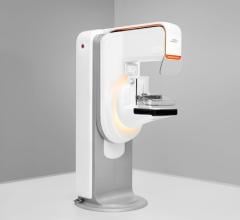
The campaign features Grammy Award winning, Oscar and Golden Globe nominated artist Mary J. Blige.
Photographer: Robert Ector
October 1, 2020 — Hologic, Inc. announced a multi-year commitment to decreasing breast cancer screening disparities for Black women.
The program is in partnership with the Black Women’s Health Imperative (BWHI), the only nonprofit organization created by Black women to help protect and advance the health and wellness of Black women and girls through awareness and education, and RAD-AID, a nonprofit dedicated to ensuring equal access to radiology health services for medically underserved communities.
Research has shown that Black women are almost 40 percent more likely to die from breast cancer than non-Hispanic white women.[i] Hologic’s initiative, which launched today in conjunction with the start of Breast Cancer Awareness Month, is designed to encourage all Black women to get annual mammograms beginning at age 40, and to provide women in underserved communities with access to superior breast cancer screening technology. The situation has become even more urgent due to the COVID-19 pandemic, as the National Cancer Institute recently predicted that 10,000 more people in the United States will die in the next decade from breast or colorectal cancer because of delayed screening and treatment.[ii]
The multi-pronged initiative includes BWHI’s P.O.W.E.R. of Sure campaign, which will examine common barriers to early screening and encourage Black women to schedule and attend their annual mammograms. The campaign features Grammy Award winning, Oscar and Golden Globe nominated artist Mary J. Blige and a multimedia digital hub with resources including common facts and myths about mammography, frequently asked questions regarding breast cancer and screening guidelines, a list of locations offering breast cancer screening, and information about what to expect when getting a mammogram during the COVID-19 pandemic.
“As a nonprofit laser-focused on the health and wellness of Black women and girls, we have a deep understanding of the barriers Black women face when it comes to annual breast cancer screening,” said Linda Goler Blount, MPH, President and CEO, Black Women’s Health Imperative. “The P.O.W.E.R. of Sure campaign will address those barriers head-on, with the help of our spokeswoman, Mary J. Blige, whose voice resonates like no other when it comes to speaking directly to Black women in an authentic and inspiring way.”
You can watch a video of Blige speaking about this initiative here.
Additionally, in partnership with RAD-AID, Hologic will fund screening and diagnostic services, and ensure there is a pathway for medically disenfranchised women to receive treatment. “Our approach is evidence-based to target regions of the United States having urgent need for breast cancer screening and diagnostics, particularly where breast cancer disproportionately impacts women of color due to healthcare inequalities,” said Daniel J. Mollura, M.D., Founder and CEO of RAD-AID. “Our interdisciplinary solution will help patients by mobilizing RAD-AID’s 12,000+ volunteer radiologists, technologists, nurses, radiation oncologists/therapists, IT professionals, health navigators, and public health specialists for new service models that overcome racial barriers.”
Hologic’s grant to RAD-AID for this initiative will support innovative care, radiology, public education, and nurse navigation at multiregional sites selected by RAD-AID as clinical partners to provide critical screening, diagnostic breast imaging, and treatment for women who may otherwise go without. Sites and facilities under development for this program are located in regions including the Bronx/Washington Heights areas of New York, the South Side of Chicago, Washington D.C., North Carolina, Georgia, Mississippi, Alabama, Arizona, Seattle/Pacific Northwest, and Colorado.
Facilities supported through this collaborative program will be equipped with Hologic’s 3D Mammography system, which features the Genius 3D Mammographyexam. The Genius exam is the only mammogram FDA approved as superior to 2D mammography for all women, including those with dense breasts, which is common among Black women.[iii],[iv],[v],[vi]
“As a company committed to improving women’s health and well-being, we have always played an active role in increasing awareness and access among all women, including those who are traditionally underserved, because it’s core to our mission and our culture,” said Jennifer Meade, Hologic’s Division President, Breast and Skeletal Health Solutions. “We believe this initiative will make a significant impact, as it unites our passion for women’s health with that of our nonprofit partners, BWHI and RAD-AID, who share our commitment to increasing awareness of the importance of breast cancer screening and improving access to 3D mammography, the standard of care for annual screenings.”
The Genius 3D Mammography exam (also known as the Genius exam) is only available on a Hologic 3D Mammography system. It consists of a 2D and 3D image set, where the 2D image can be either an acquired 2D image or a 2D image generated from the 3D image set. There are more than 7,000 Hologic 3D Mammography systems in use in the United States alone, so women have convenient access to the Genius exam.
For more information: www.hologic.com
References:
[i] CDC, 2019. Health United States, 2018. Table 33
[ii] Sharpless NE. COVID-19 and cancer. Science. 2020 Jun 19;368(6497):1290. doi:10.1126/science.abd3377
[iii] Results from Friedewald, SM, et al. “Breast cancer screening using tomosynthesis in combination with digital mammography.” JAMA 311.24 (2014): 2499-2507; a multi-site (13), non-randomized, historical control study of 454,000 screening mammograms investigating the initial impact the introduction of the Hologic Selenia® Dimensions® on screening outcomes. Individual results may vary. The study found an average 41% increase and that 1.2 (95% CI: 0.8-1.6) additional invasive breast cancers per 1,000 screening exams were found in women receiving combined 2D FFDM and 3D™ mammograms acquired with the Hologic 3D Mammography™ System versus women receiving 2D FFDM mammograms only.
[iv] Bernardi D, Macaskill P, Pellegrini M, et. al. Breast cancer screening with tomosynthesis (3D mammography) with acquired or synthetic 2D mammography compared with 2D mammography alone (STORM-2): a population-based prospective study. Lancet Oncol. 2016 Aug;17(8):1105-13.
[v] FDA submissions P080003, P080003/S001, P080003/S004, P080003/S005.
[vi] McCarthy A, Keller, M, et. al. Racial Differences in Quantitative Measures of Area and Volumetric Breast Density. Journal of the National Cancer Institute. 2016 Apr; 10.1093/jncl/djw104.


 March 21, 2025
March 21, 2025 








